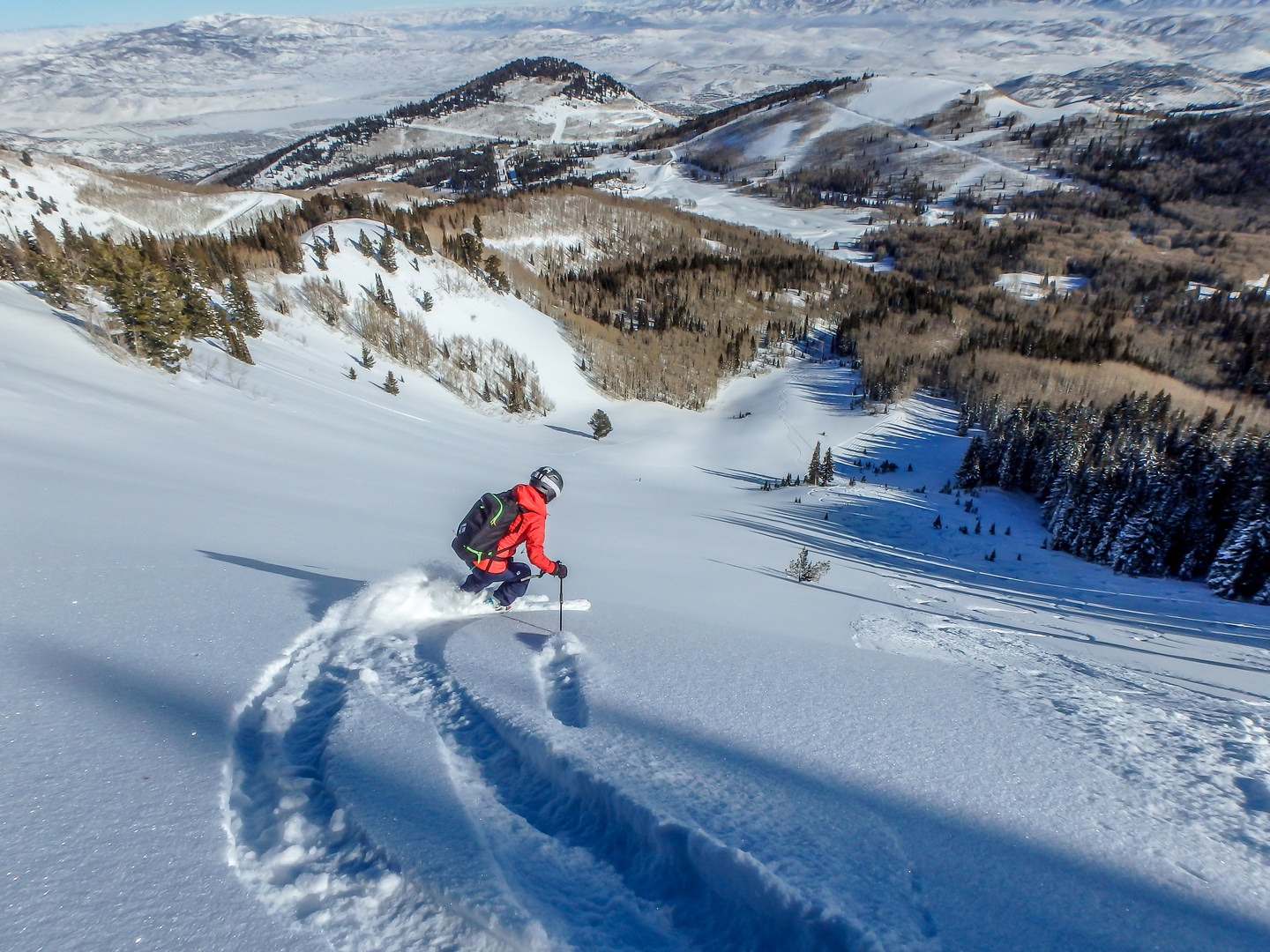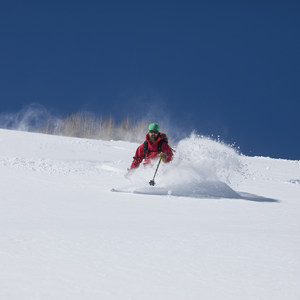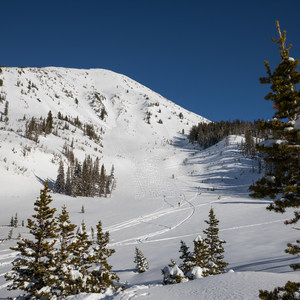Nestled between the Great Salt Lake, the Oquirrh Mountains, and the famous Wasatch Mountains, Salt Lake City is an incredibly unique city located in an outdoor paradise. Despite having over 1 million people in the Salt Lake valley, Salt Lake City has, without a doubt, the best access to pristine outdoor opportunities of any city in the Lower 48 states, with skiing being perhaps the most famous of all area activities.
The Wasatch Mountains, which spill directly into city limits, average up to 500 inches of snow in the deepest areas. The Cottonwood Canyons (Big and Little) each have two world-renowned ski resorts and have paved roads with parking and numerous trailheads. Add Salt Lake City to the mix and you have an equation for the highest volume of backcountry skiers in any mountain range in the world. Skiers in Utah have no problem spending hours on the skintrack to access the best terrain that the Wasatch has to offer. From chutes steeper than 50 degrees to gladed meadows to massive bowls, the Wasatch seems to have been sculpted with the backcountry skier in mind. Below are some of the best backcountry skiing areas within a 30-minute drive from downtown Salt Lake City. Seriously.
Big Cottonwood Canyon
Big Cottonwood Canyon is exactly like its name suggests; big. It is 18 miles long and very wide, and it has an extreme variety of backcountry skiing terrain. A large majority of Big Cottonwood features mellow gladed slopes, but there are also ample opportunities for steep skiing and long climbs. For those seeking steep skiing and a challenging climb, look no farther than Kessler Peak. Kessler has a variety of options, all of which demand strong fitness and skiing abilities. Mount Raymond, which has one of the most aesthetic ski lines in the Wasatch, is also approachable from Big Cottonwood Canyon. It is a long, challenging hike to the summit of Raymond, but the ski descents are truly exceptional. From the summit ridge, one has access to numerous steep chutes that funnel into a steep apron. Truly beautiful skiing. The Seagull Chute, located at the top of Big Cottonwood on Mount Tuscarora, also features steep skiing, though with much less of an approach than Kessler Peak or Mount Raymond.
For those seeking mellower terrain, Silver Fork offers a wide variety of lower angle slopes, topping out in a fantastic run called Doug’s Drop. The Meadow Chutes are the most popular run in this area, and they feature wide swaths of open terrain through predominantly aspen forests. Also accessible from Big Cottonwood is the Park City Ridgeline, which is arguably one of the best backcountry skiing zones in Utah. This ridgeline extends fo roughly 8 miles, offering numerous backcountry bowls that are unique in the Wasatch.
Little Cottonwood Canyon
Little Cottonwood Canyon could easily be referred to as the epicenter of American skiing. Little Cottonwood (LCC) gets the most snow in the state of Utah and it consistently gets some of the deepest snow in the United States. The terrain here is steep and rugged, and it is perfectly suited for expert skiers looking to push the boundaries. Many of LCC’s toughest lines, like the Hypodermic Needle, are truly epics that require incredible fitness and skills. You don’t have to be a pro, however, to access some of the best of what LCC has to offer.
White Pine Fork is one of the most popular trailheads in the canyon, and rightfully so. From White Pine, one has access to so many skiing options that it can be a bit overwhelming. Pink Pine has great tree skiing, while Red Baldy is a large summit at the top of the drainage that offers consistent, fantastic powder skiing. Mount Superior is often referred to as the monarch of the Wasatch, and it is approached from the top of LCC. Skiing off the summit of superior should be a bucket list ski for any serious backcountry skier, with Cardiac Bowl to the north and the very intimidating South Face to the south. The South Face of Mount Superior is perhaps the closest to Alaskan-style skiing that Utah has to offer. Catherine’s Pass, at the very top of LCC, offers much more mellow touring options off of Rocky Point and eventually Sunset Peak. This area is frequently skied by Alta and or Brighton skiers.
Simply put, Salt Lake City has some of the best access to skiing of any city in the world. With Big and Little Cottonwood Canyons at its doorstep, there is abundant snow, peaks, glades, and everything in between for those willing to work for their turns.
Backcountry Safety
While winter backcountry adventures can be a fun and intriguing way to explore the winter wilderness, they can also quickly become dangerous outdoor activities that pose significant and life-threatening risks as conditions affecting safety (i.e. weather, snow pack stability, avalanche hazard) are constantly changing. Prior to engaging in these activities, each individual should get the proper training to make safe decisions (including knowing when not to go), and be prepared/equipped for backcountry navigation and to employ avalanche training and tools. Expert backcountry guides are also available throughout the state to help you get oriented and travel safely. There is an etiquette to backcountry travel that helps keep yourself and others safe. Please visit our Backcountry Skiing and Avalanche Safety post to learn more. Experience, knowledge and informed and safe decision making are the means to a long-lasting and healthy relationship with the winter backcountry.













Comments
Sign In and share them.